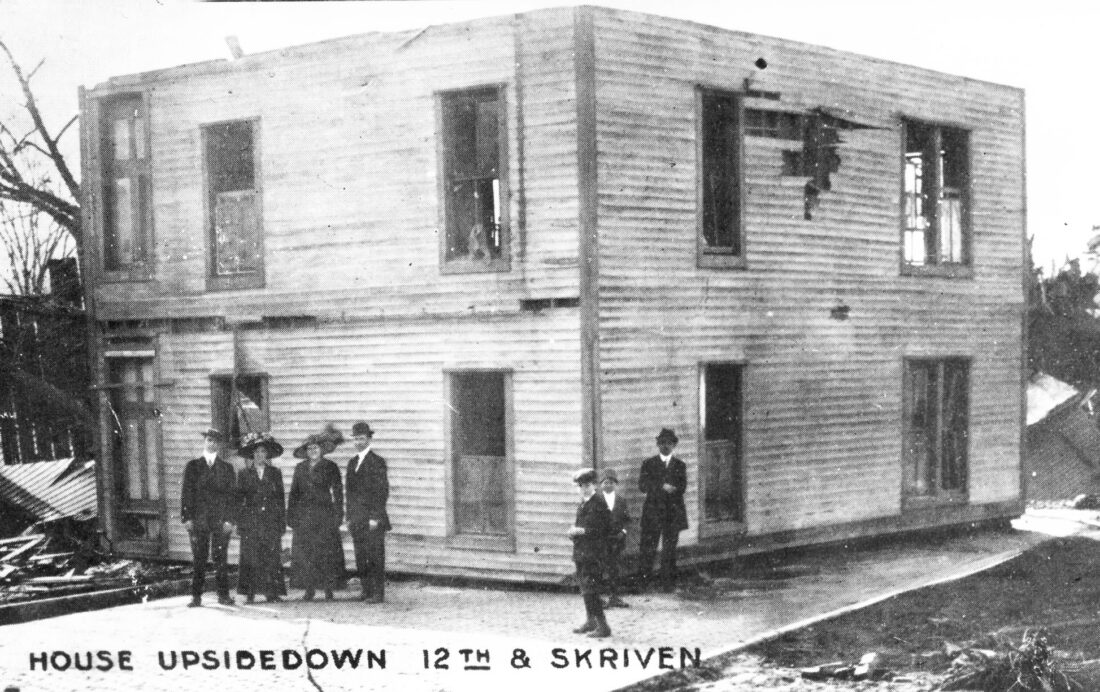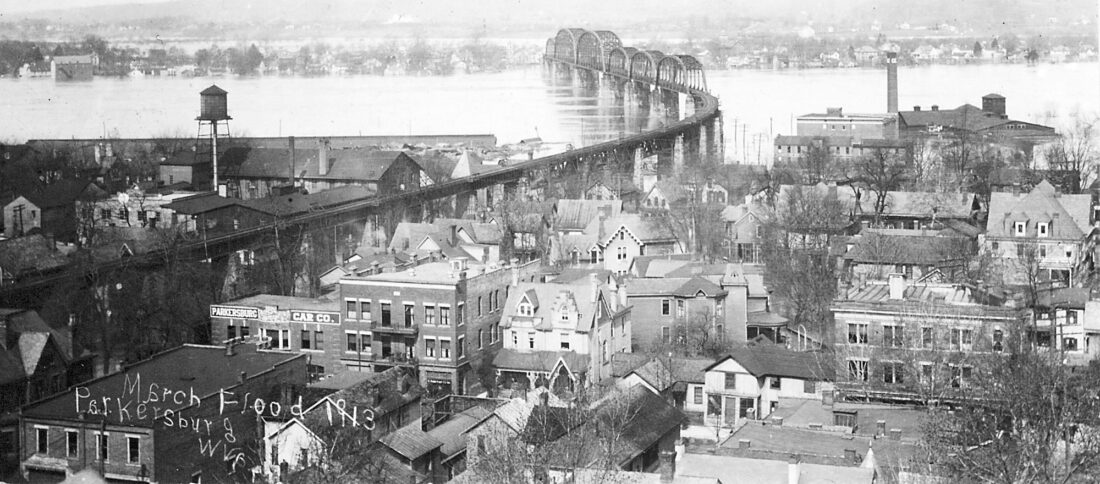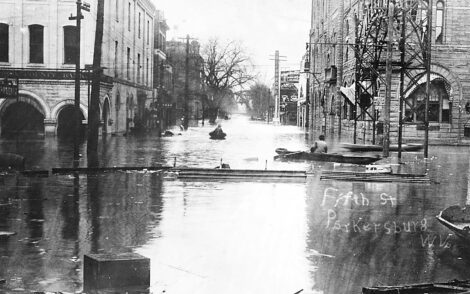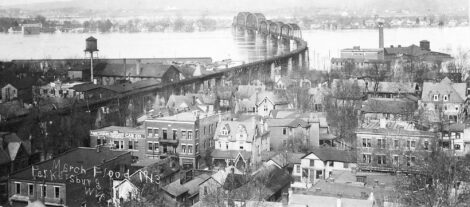Wading Through 1913: A flood for the ages
Rivers reached record heights in deluge
- Fifth and Market streets in downtown Parkersburg, accessible only by boats during the 1913 flood. (Photo Provided)
- Hazen, Romine and F.H. Market Clothiers. (Photo Provided)
- The current in the 1913 flood upended this house onto its roof at 12th and Skriven in Parkersburg. (Photo Provided)
- The railroad bridge over the swollen Ohio River. The 1913 flood predates the Belpre Bridge. (Photo Provided)

Fifth and Market streets in downtown Parkersburg, accessible only by boats during the 1913 flood. (Photo Provided)
PARKERSBURG — The 110th anniversary of the Great Flood of 1913 began March 23 with the beginning of storms that included about a dozen twisters in Iowa, Illinois, Indiana, Michigan, Missouri and Nebraska.
The river crested at 58.9 feet on March 29, 1913, in Parkersburg, almost 23 feet above flood stage, the highest in recorded history. The January 1937 flood was about 4 feet lower.
The Ohio River crested at 58.3 feet on March 29, 1913, over 23 feet above flood stage in Marietta.
The 1913 flood and the 1937 flood laid the groundwork for the construction of floodwalls. Parkersburg and Point Pleasants were among those.
A comprehensive review of the flood from a nearly real-time perspective was compiled in 1913 by the U.S. Geological Survey, “The Ohio Valley Flood of March-April, 1913,” written by A.H. Horton and H.J. Jackson.

Hazen, Romine and F.H. Market Clothiers. (Photo Provided)
“In considering the cause of the flood, the condition of the ground just prior to the flood and the amount of water already in the river channels should be noted. The ground was not frozen but was practically saturated by previous rains and so did not offer means of storing any considerable amount of the water and thereby tending to prevent its rapid discharge into the streams,” the Geological Survey report said.
“It is extremely doubtful, however, if ground storage, even under the most favorable conditions, would have had any material effect in reducing this flood because of the intensity of the precipitation. No time was available in which the ground, even if it had not been saturated, might absorb the rain,” the report said. “In addition to these conditions, so favorable to rapid runoff, the river channels were fairly well filled, none of the tributaries being low, the main Ohio being at ordinary stage above Parkersburg and at a comparatively high stage below Parkersburg.”
The progression of the flood was tracked from west to east. The Miami River was the first to reach critical level at 1 a.m. March 26 and crested at 29 feet in Dayton, 8 feet higher than recorded in history. The crest was 3 a.m. March 26 at Hamilton at 34.6 feet, 13.5 feet higher than the previous record in 1898. The Scioto River, fed by the Miami, crested at noon March 25 at 22.9 feet, 1.6 feet above the 1898 high, and crested at 11 a.m. March 26 at Chillicothe at 37.8 feet, 9.5 feet higher than 1898.
The flood quickly progressed to the Muskingum River, the largest and most easterly of the three principal streams in Ohio, the report said. Zanesville crested at 51.8 feet on March 27, 15 feet higher than in 1898. At Beverly, 20 miles from the mouth of the Muskingum, the river crested 11 feet above 1898 at 46.5 feet on March 27.
“Thus it will be noted that although the progress of the storms was from the mouth toward the source of Ohio River, the crests from the northern tributaries in the State of Ohio reached the mainstream within a period of about 24 hours of each other and within from three to four days of the very beginning of the precipitation,” the report said. “This accounts for the extreme rapidity of the rise on the Ohio from Marietta to Portsmouth. By the night of March 27 and the morning of the 28th crests from all tributaries of the Ohio above the Kanawha had reached the mainstream.”

The current in the 1913 flood upended this house onto its roof at 12th and Skriven in Parkersburg. (Photo Provided)
The flow from the Monongahela River system came in later, which the report said accounted for the lagging of the crest at Pittsburgh. River stages at Pittsburgh, Beaver Dam and Wheeling on March 28 were below previously recorded highs.
“Muskingum River was more instrumental than any other single tributary in causing the record-breaking stages on the Ohio, as shown by the fact that previously recorded maxima were surpassed at Marietta and Parkersburg by 5 to 5.5 feet, the greatest other increase being 2.8 feet at Point Pleasant,” the report said

The railroad bridge over the swollen Ohio River. The 1913 flood predates the Belpre Bridge. (Photo Provided)










